|
|
|
 |
VICTORIAN AND EDWARDIAN 'AD' (1) Presented by Ex PC 799 'A'/164477 Leonard Bentley |
 |
|
Leonard Bentley was PC 799 'A' stationed at Cannon Row Police Station from June 1973 to August 1982 Len has a deep interest and an extensive knowledge of Victorian and Edwardian London and in particular the area once policed by Cannon Row (AD). Len invites us to take an escorted tour with him using the original photographs from his vast collection and provides informative and entertaining information relating to those bygone eras. Len would have preferred the images to have been shown larger but in order for our visitors who are using a 'dial up' facility to download the page reasonably quickly unfortunately they have had to be reduced. JH |
|
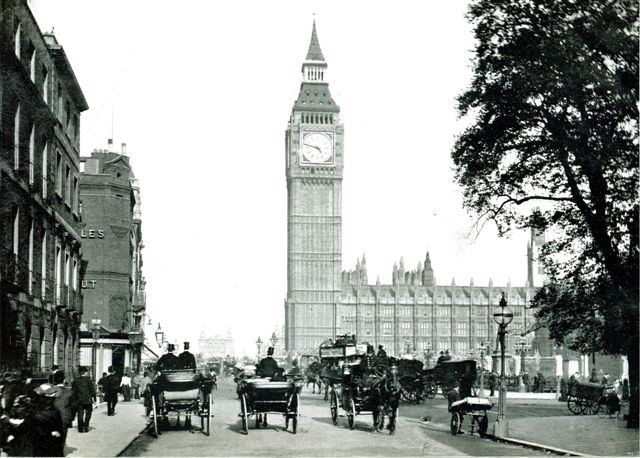 |
LEFT: Parliament Square SW1 looking East from Great George Street This photograph was taken in1895/6 from the junction with Great George Street, Big Ben shows the time as 4.47p.m. and from the clothes worn and the amount of traffic, it is probably a summer weekday. |
| RIGHT: Broad Sanctuary SW1 looking West Broad Sanctuary. This is a superb photograph taken in the early 1890s; the camera is in front of the Great west Door of Westminster Abbey looking westwards. I think it must be early morning as I can only see one figure walking up Tothill Street. I am straying slightly off AD’s ground and onto AR, the grounds slightly merge in my mind because I served at Rochester Row later in my career. The building on the left is Westminster Chambers designed by Gilbert Scott, it was built in 1854 as 120 self contained residential apartments in a Gothic style in order to blend in with the Abbey. It also forms the archway entrance to Dean’s Yard and Westminster School. The building has since been converted into offices. The column was also designed by Gilbert Scott and was erected in 1861 to commemorate the old boys of Westminster school who died in the Crimean war. The large building in the centre of the photograph is The Westminster Palace Hotel, also built in 1861 and at the time, the largest and most luxurious hotel in London. It had 400 rooms and was the first hotel in London to have lifts. The hotel’s clientele were mostly members of Parliament and visitors to London who had business at the Law Courts which were on the other side of Parliament Square adjacent to Westminster Hall. The hotel was subsequently converted into offices and renamed Abbey House. It has since been demolished to make way for yet another non descript matchbox. The building in the distance along Tothill Street is Queen Anne’s Mansions built on the site which is now occupied by The Home Office. At the time of completion in 1884, at 14 storeys it was the tallest building and the ugliest in London. The building just about survived the blitz and was demolished in the post war period. On the site where you would expect to see The Methodist Central hall is The Royal Aquarium, this was an enormous building inspired by the Crystal Palace. It covered an area of two and a half acres and the frontage on Tothill Street was 600 feet long; Built in 1876 as an aquarium with over 30 fish tanks, one of which was the largest in the world, it was never really a success. It later became the venue for all sorts of entertainment including restaurants, music hall, Zulu tribal dancing, swimming displays by scantily clad young ladies and of course ‘Zulima’ the strongest woman in the world. At the far end of the building was The Aquarium Theatre, this was where Lily Langtry performed during the last years of its existence, the Aquarium was demolished in 1903 to make way for The Methodist Central Hall. If the camera could be moved further round to the right, you would see the old Westminster Hospital. It was built in 1834 and demolished within living memory in 1951. It was situated on the site now occupied by The Elizabeth II conference centre. |
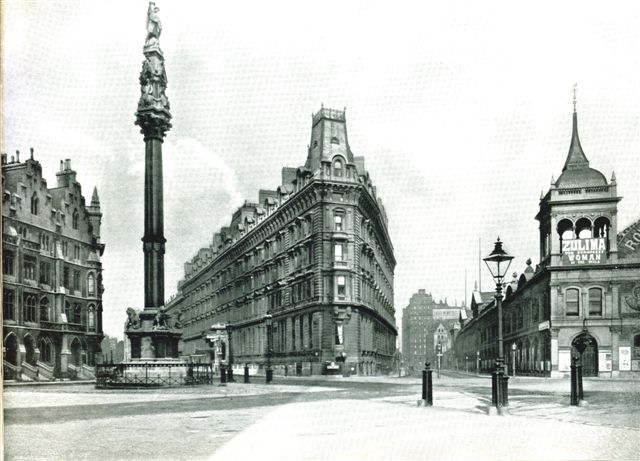 |
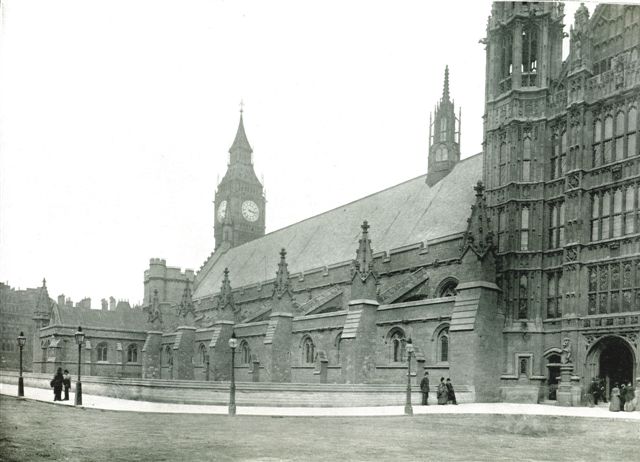 |
LEFT: St Stephen's Entrance Palace of Westminster (Parliament) This photograph was taken in 1895/6; visitors are entering the house at 3.16pm.on a dingy day. There are three officers from POW in the photograph, anybody recognise themselves? |
|
RIGHT: Looking West From St. Stephen's Tower (Big Ben) This is a rather muddy photograph of about 1895, but rewards examination. The Abbey and St. Margaret’s church appear to be the same as ever except that the Abbey has undergone extensive renovation in recent years. To the left of the Abbey and up a bit you can see the gasometers of The Gas, Light and Coke Company in Marsham Street, the site now occupied by the Department of Environment offices which are soon to be demolished. The company had a wharf on the river where The Victoria Tower gardens now stand for the offloading of coal. |
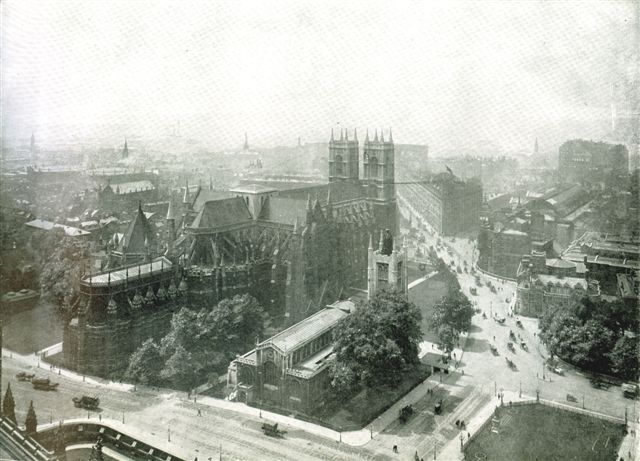 |
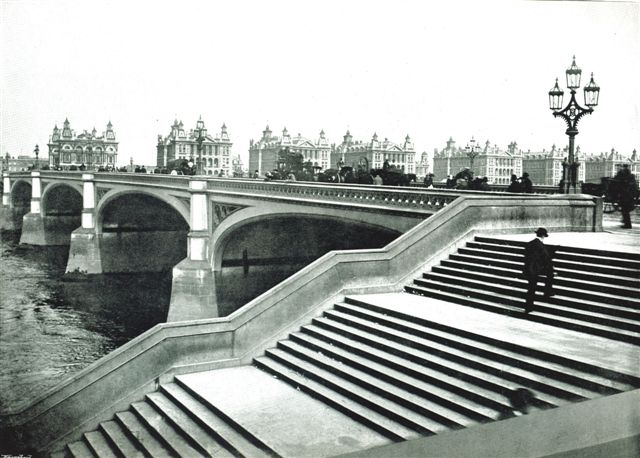 |
LEFT and BELOW : Two Views of Westminster Bridge Westminster Bridge. The photographs were taken from both ends of the Bridge in about 1895, the photograph looking towards the south bank shows seven of the eight blocks of St. Thomas’s Hospital already described. The current bridge replaced the first Westminster Bridge in 1862 and is located slightly downstream from the original. The first bridge was designed by a naturalised Swiss called Labelye; it was opened in 1750 and had taken many years to complete. The bridge had 15 stone arches and over every pier was constructed a recessed domed octagonal refuge for pedestrians. The refuges became the haunt of robbers and other vagabonds and in order to allay the public disquiet the authorities employed twelve watchmen to patrol the bridge at night. In 1860 in order to provide a suitable approach to the bridge, houses on the south side of Bridge street were demolished and in 1864 the remaining houses in front of St. Stephen’s Tower were removed and the current gardens laid out. The statue of Boadicea adjacent to the bridge was placed there in 1902, although it had been hanging about for some years before its erection on the embankment. It was sculpted by Thomas Thorneycroft, the father of Hamo who sculpted the statue of Oliver Cromwell. In the photograph looking towards the north bank a scenario is being played out to which we will never know the conclusion. Walking towards the camera in what appears to be a hurried manner are two Police Officers and on the upstream footway is the lone figure of a Police sergeant looking intently at the fast approaching officers. Where were they going? What were their duties? Were they late? Did they get a rocket? Also in this photograph you can see the St. Stephen’s Club at the corner of Bridge Street and The Embankment and dates from 1875. I suppose we all have our own stories relating to the Bridge, one of my first drunks was a casualty Doctor from St. Tommy’s, flat out on the Bridge; and then there was the transvestite who cut his wrists and tried to jump into the Thames. Happy days. |
|
|
|
| Click on above image to continue your escorted tour of Cannon Row's ground of more than a century ago, 'Victorian and Edwardian 'AD' (2) OR Click on the helmet image to return to 'SIGNPOST' (Express Navigation)
|
|